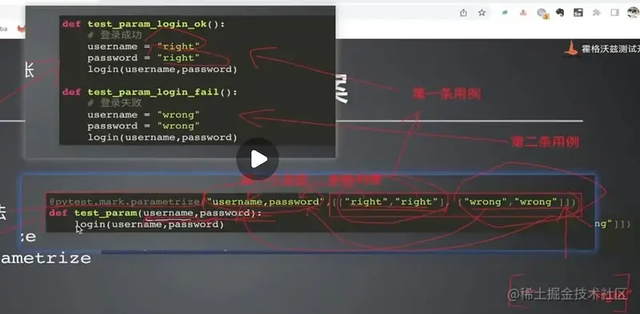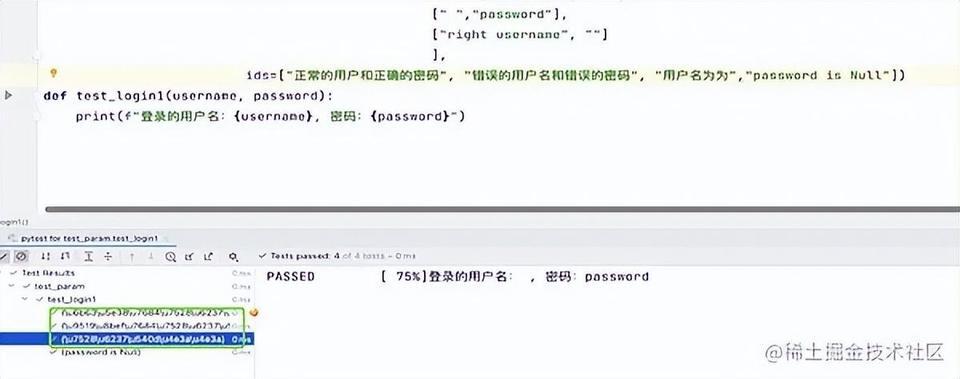软件测试 / 测试开发丨 Pytest 参数化用例
本文为霍格沃兹测试开发学社学员笔记分享
参数化
通过参数的方式传递数据,从而实现数据和脚本分离。
并且可以实现用例的重复生成与执行。
参数化应用场景
测试登录场景测试登录成功,登录失败(账号错误,密码错误)创建多种账号: 中⽂文账号,英⽂文账号
普通测试用例方法 Copy 多份代码 or 读⼊入参数?一次性执⾏多个输⼊入参数
复制代码
参数化实现方案
pytest 参数化实现方法
装饰器:@pytest.mark.parametrize
复制代码

Mark:参数化测试函数使用
单参数
多参数
用例重命名
笛卡尔积
参数化:单参数情况
单参数,可以将数据放在列表中
复制代码
参数化:多参数情况
将数据放在列表嵌套元组中
将数据放在列表嵌套列表中
复制代码
参数化:用例重命名-添加 ids 参数
通过 ids 参数,将别名放在列表中
复制代码
参数化:用例重命名-添加 ids 参数(中文)
pytest 不支持中文格式

复制代码
复制代码
参数化:笛卡尔积
两组数据 a=[1,2,3]b=[a,b,c]
对应有几种组合形势 ?(1,a),(1,b),(1,c)(2,a),(2,b),(2,c)(3,a),(3,b),(3,c)
复制代码
版权声明: 本文为 InfoQ 作者【测试人】的原创文章。
原文链接:【http://xie.infoq.cn/article/fae678affd49639b855975b2e】。文章转载请联系作者。











评论